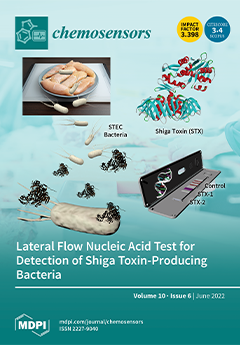In a transformer, the insulation materials will produce different dissolved gases due to various faults in the operation of the transformer, in which C
2H
2, CH
4, and H
2 are the main dissolved gases. In this study, the
[...] Read more.
In a transformer, the insulation materials will produce different dissolved gases due to various faults in the operation of the transformer, in which C
2H
2, CH
4, and H
2 are the main dissolved gases. In this study, the adsorption characteristics of the above three gases on the SnO
2–GeSe monolayer surface were discussed and analyzed based on the density functional theory. The adsorption energy, transfer charge, geometric structure parameters, electronic density of states, electronic local function, charge difference density, and recovery time were calculated and compared to characterize the gas-sensing adsorption mechanism. The results showed that the SnO
2–GeSe monolayer exhibited good adsorption capacity, selectivity, and repeatability for the three characteristic dissolved gases. After adsorbing CH
4 gas molecules, the conductivity of the SnO
2–GeSe monolayer decreased. After adsorbing C
2H
2 and H
2 gas molecules, the conductivity of the SnO
2–GeSe monolayer increased. Therefore, the SnO
2–GeSe monolayer has great application potential in the real-time monitoring of dissolved gases in insulating materials, which may become a new type of resistive gas sensor.
Full article





